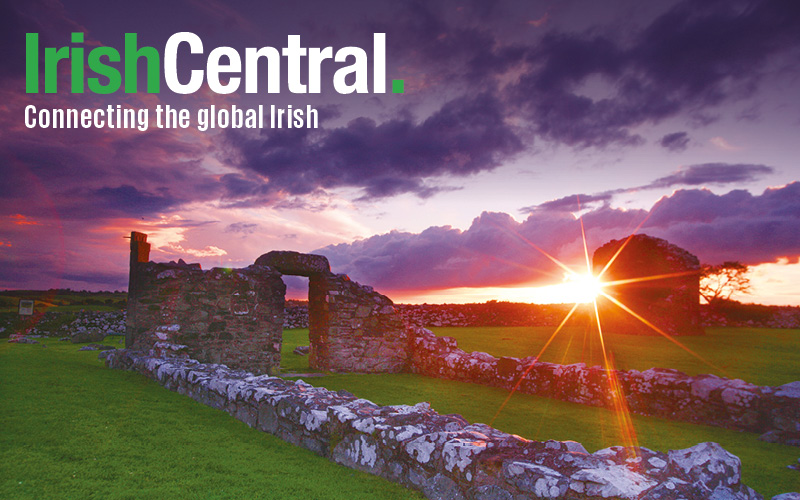A large range of Irish names begin with the prefix "Mul". Examples include Mulcahy, Mulvihill, Mullaly, and Mullan. These names have no familiar connections, but like the names beginning with "Gil", all have their origin in a common name form. They almost all derive from the Gaelic word "Maol" meaning follower, servant, or devotee. The name was invariably preceded by "O" as exemplefied by O'Maol Mhichil, follower of St. Michael, now anglicized as Mulvihill; O'Maol Challan, follower of St. Callan, now Mulholland; O'Maol Mhire, follower of Mary, now Mullery. Other examples are Mulqueen (servant of St. Caoine), Mulrennan (follower of St. Brendan), Mulrooney (follower of Ruanaidh), Muldowny (servant of the church), Mullarkey (follower of St. Earc), Mulhern (follower of St. Ciaran), and Mulcahy (follower of St. Cathac). The precise derivation of some of the Mul names is not understood. For example, Mulvaney or Mulvenna is thought to be derived from Maol Mheana. The "Mheana" is question is probably the river Main in Ulster. The names Mulgrew or Mulcreevy are derived from Maol Chraoibhe, which literally means follower of the branch. Exactly why there was such devotion to these subjects is unclear. A second root of the name is from the Gaelic word "Maol", which also means bald. However, this is responsible for only a small number, such as Mullan and Mulligan. Several of these names have been further shortened by dropping the "Mul". Notable among these is O'Mulryan which is almost always shortened to Ryan, Mulrooney, often shortened to Rooney, Mulholland, sometimes shortened to Holland (there are other sources for this name), and Mulconry, sometimes shortened to Conry or Conroy, although once again there are other potential roots for the latter name. The O'Mulconrys were the hereditary poets and historians to the O'Connor Kings of Connaught, and many were noted scholars, including Fearfasa O'Mulconry, one of the scholars who compiled the Annals of the Four Masters, a history of Ireland up to 1616. Maurice O'Mulconry was the author of a beautiful illustrated copy of the Book of Fenagh in 1519. Notable "Muls" include Hercules Mulligan, the "confidential correspondent" to George Washington who, as a rebel and resident of New York, was a member of the quaintly named "Revolutionary Committees of Correspondence and Observation". In this capacity he kept the American Rebel Army informed of the strengths of the British Army defending that city in 1776. In the Rebel Army there were 40 Mulhollands, including Lieutenant William Mulhollen of the 3rd Regiment, Maryland line. One of the Union heroes of the Civil War was St. Augustine Mulholland (1839-1910) who was born in Lisburn, County Antrim and fought at Fredericksburg, led the 140th Pennsylvania volunteers at Gettysburg, and won the Congressional Medal of Honor for valor in another engagement. He later became Philadelphia's Chief of Police. Another prominent Mulholland is Andrew Mulholland (1791-1866) who was a progressive Belfast cotton and linen miller and the first to introduce machinery for flax spinning. He was Lord Mayor of Belfast in 1845. William Mulholland (1855-1935) was born in Belfast and, after years as a sailor, settled in Los Angeles where he became Chief Engineer. He foresaw the growth of the city and the need for water supplies. He was responsible for the building of the aqueduct from Owens Point, which was the largest in the world at the time, and many other projects. He retired in 1928 and in his 50 years in the job he "watered" the city of Los Angeles in its growth from a population of 9,000 to 1.25 million. William Muldoon (1852-1932), born in New York City, was a champion wrestler but also a prominent organizer of wrestling and boxing. He is credited with introducing Graeco-Roman wrestling to the United States, following an international tour of his troupe of wrestlers. He was John L. Sullivan's trainer, and donated, with Gene Tunney, the trophy for the World Heavyweight Boxing Championship. Other notable "Muls" include William Mulready (1786-1869), who was born in Ennis, Co. Clare. After the family emigrated to London, he studied painting and became a popular artist, whose work is still exhibited in the National Gallery of Ireland and in several major British galleries. Another painter was Thomas James Mulvany (?- 1845), who was one of the founders of the Royal Hibernian Academy and was appointed its keeper in 1841. His son George F. Mulvany (1809-1869) was also a painter and generally acknowledged as a superior artist. Like his father, he played an important part in the development of arts in Ireland. He also became keeper of the RHA and played a prominent part in the foundation of the National Gallery of Ireland, and was made its first director in 1862. General Richard Mulachy (1886-1971) was a member of the rebel Irish Volunteers and an active rebel in the Irish rebellion of 1916. He later became chief of staff of the Rebel Army. He was later a Minister for Defense in the first government of the Irish Free State, and in several later Irish governments. Other people with "Mul" names are the Irish poet Paul Muldoon and the actor Dermot Mulroney of My Best Friend's Wedding. There have been two "Mul" heads of state, Robert Muldoon who was the Prime Minister of New Zealand from 1975 to 1984, and Brian Mulrooney, who has been Prime Minister of Canada. The name Mulrooney has often been shortened to Rooney, and famous bearers of this name include Dan Rooney, owner of the Pittsburgh Steelers football team, and William Rooney, the United Irishman writer and poet. Another rebel writer and poet was the young Irelander William Mulchinock (1820-1864). He is best remembered as the author of one of Ireland's most famous songs, "The Rose of Tralee".




Comments